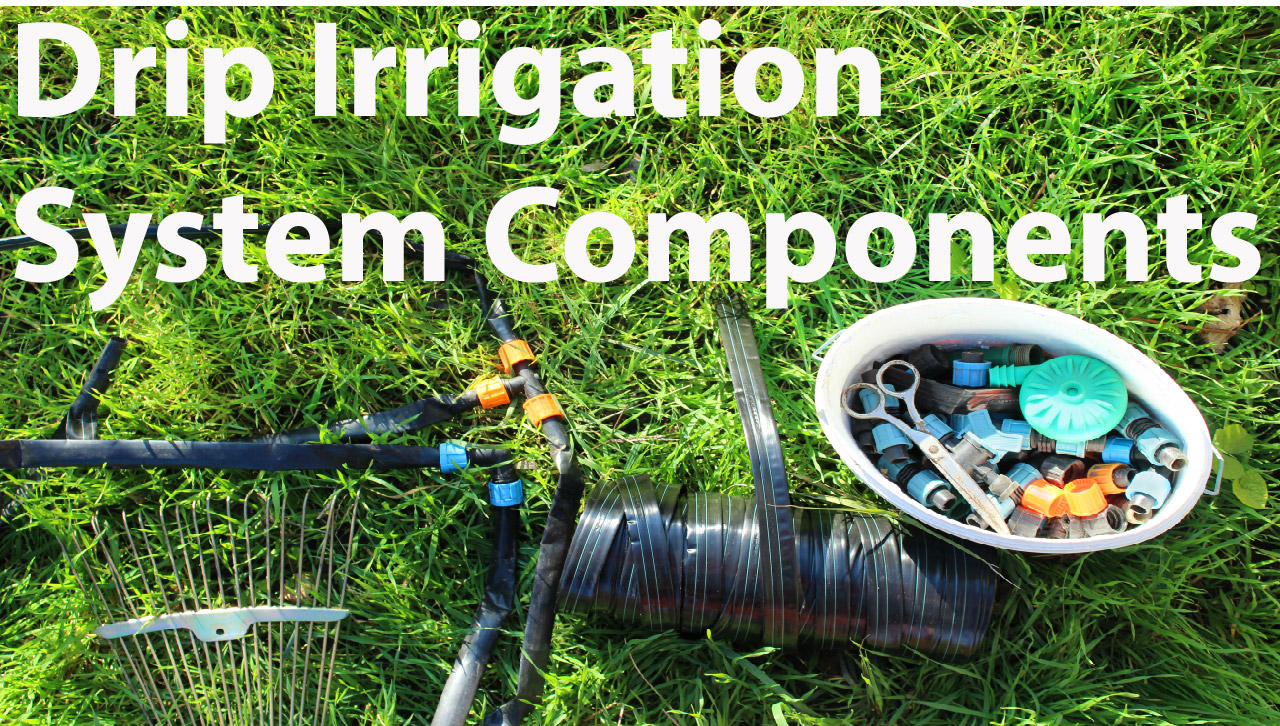Drip Irrigation System Components
Jan 20th 2023
Drip Irrigation System Components
Drip Irrigation has some key components that are needed to insure a well-designed and reliable system. If you are new to drip irrigation but are a gardener you are probably familiar with the term garden hose, soil types and water source. All of these will play a role in the type of drip irrigation kit or system that you install.
Drip irrigation is one of the best ways to avoid water waste associated with a sprinkler system. Drip irrigation uses a system of tubes, known as drip irrigation tubing, to send small amounts of water precisely where it is required. Drip systems reduce water runoff, evaporation, and wind drift by supplying a steady, consistent trickle of water to the root zone or above the soil surface.
The best approach to water and add nutrients is through drip irrigation for flower beds, plants and vegetables in areas with limited water supply. Homeowners and small nurseries use drip irrigation, which makes watering your gardens easy and economical. Drip irrigation systems are well-liked and reasonably priced; they are used in small gardens and in large-scale ag.
Timer
An irrigation timer allows you to program several valves, which will turn the water off and on when scheduled. You can select dates and times to water your garden or lawn. They are attached to your faucet or valve. Timers are available in battery, wind-up, electric, and solar models. Choosing the timer type will depend on where you connect it and your garden size and needs.
Filter
A filter unit is required to prevent nozzles and emitters from clogging with suspended contaminants. Filters prevent the debris from entering the drip lines and tubing. The kind of filtration needed depends on the emitter type and the quality of the water.
Pressure Regulator
A drip irrigation system cannot be used with the standard residential water supply because of the high-water pressure. The pressure for a drip irrigation system is between 15 psi and 30 psi. Despite fluctuations in your home's water supply, the pressure regulator simultaneously lowers the water pressure and maintains it steady.
Backflow Preventer
When your drip system turns off, a backflow device stops water from your irrigation system from being pulled back into your drinking water supply. This water may get contaminated with dirt and germs from the soil.
Tubing
Drip irrigation is a series of tubing, fittings, and driplines or emitters that deliver water from your faucet to your plants. The drip tubing, also known as a distribution line, attaches to the pressure regulator via a tubing adapter. Drip tubing is frequently black or brown because they mix in with mulch and dirt. The larger drip tubing 3/4" and 1/2" is often used as a mainline or header line, and the smaller tubing as sub-mains to deliver the water to your gardens or plants.
Emitters
Drip irrigation emitters, also known as drippers, are tiny plastic gadgets that attach to the tubing and release water into the ground. The flow rate in gallons per hour (GPH) and maximum water pressure in pounds per square inch (PSI) are used to rate emitters. Most plants need one or two emitters to get the correct quantity of water. Choosing the right emitter type and flow rate is essential. A slow-flow emitter works best with clay soil as the absorption rate is slow in this type of soil and a high-flow emitter works well with sandy soil.
End Cap
End caps stop water from dripping from lines and are often used for flushing your drip systems. Remove the cap and drain the lines. A flush valve can substitute the use of an end cap by allowing water to drain after the system has turned off, and pressure has dropped below 2 PSI. To drain out any silt or algae accumulated inside the tubing, remove the end cap at least once yearly. You may put the cap back on once the water flows clear, indicating that the tubing has been cleaned.
If you have any questions, please visit us at dripworks.com

